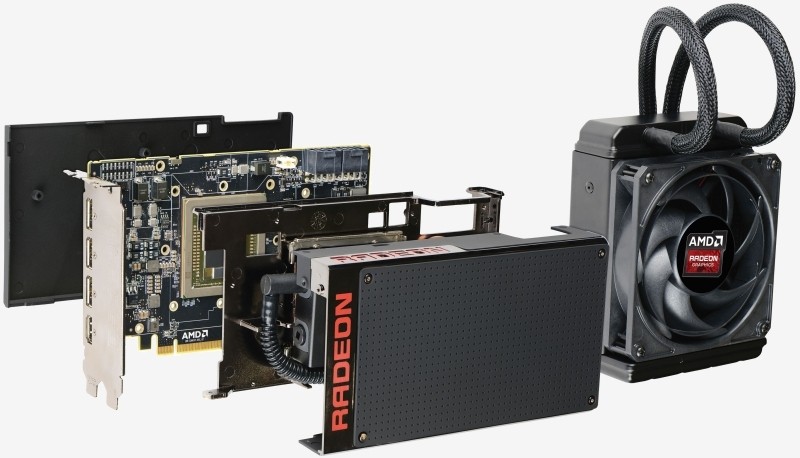
Today marked the launch of AMD’s new 300 Series graphics cards but truth be told, most everyone is waiting to see what kind of performance the upcoming Radeon Fury X can lay down. Some reviewers already have AMD’s latest hardware in their test beds but as you may have heard, all reviews are embargoed until next week (June 24, to be exact).
As happens from time to time, there was a communications “misunderstanding” and AMD’s internal benchmarks – the ones included in the reviewer’s guide as guidelines of what to expect during testing – were prematurely posted online. With the cards (no pun intended) already on the table table, AMD has given reviewers the green light to go ahead and share these internal benchmarks with readers.
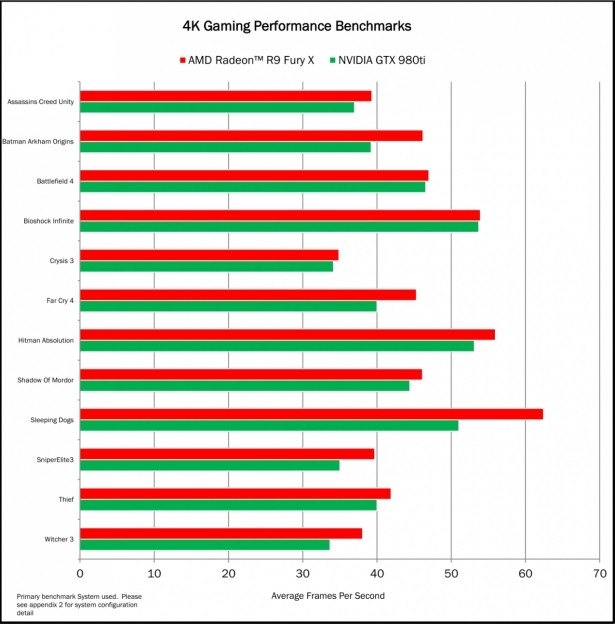
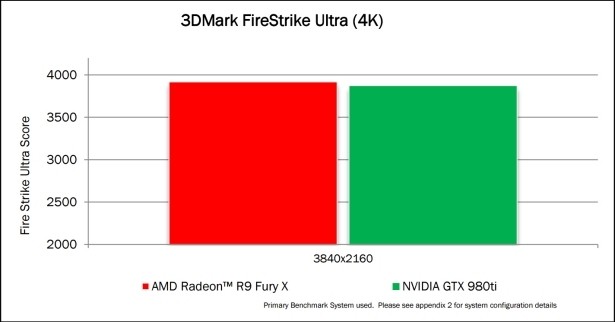
And here are the settings that AMD used in each test.
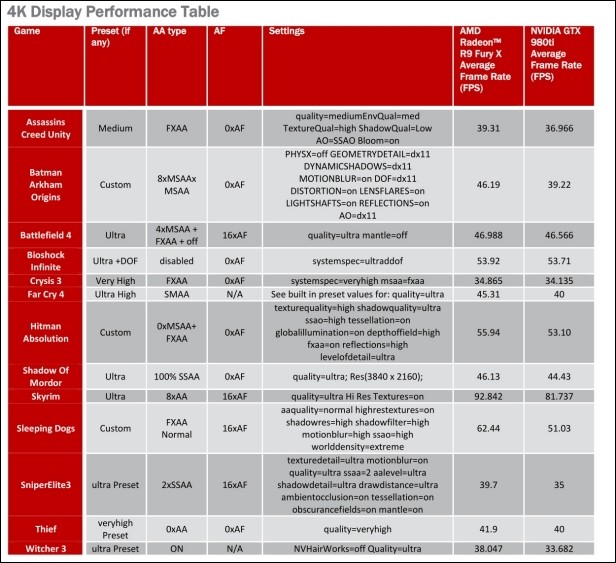
Here's a little snipped of what you can expect with a 100MHz overclock.
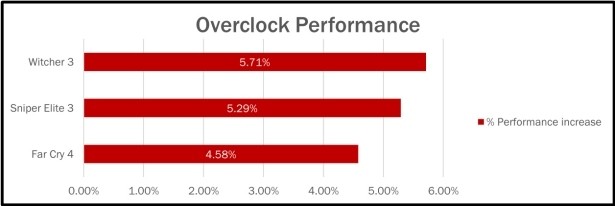
It’s clear to see that the Radeon Fury X outpaces Nvidia’s GTX 980 Ti in every single test. But it’s also important to remember that these benchmarks do come with an asterisk attached.
AMD obviously wants to showcase the Fury X in the best possible light. That doesn’t mean there’s anything shady going on here but it’s pretty much a guarantee that what we’re seeing is a best-case scenario. How will these results compare to true real-world performance? Unfortunately, we'll have to wait until June 24 to get those answers.
In the meantime, here's a complete specifications list of the Fury X to chew on.
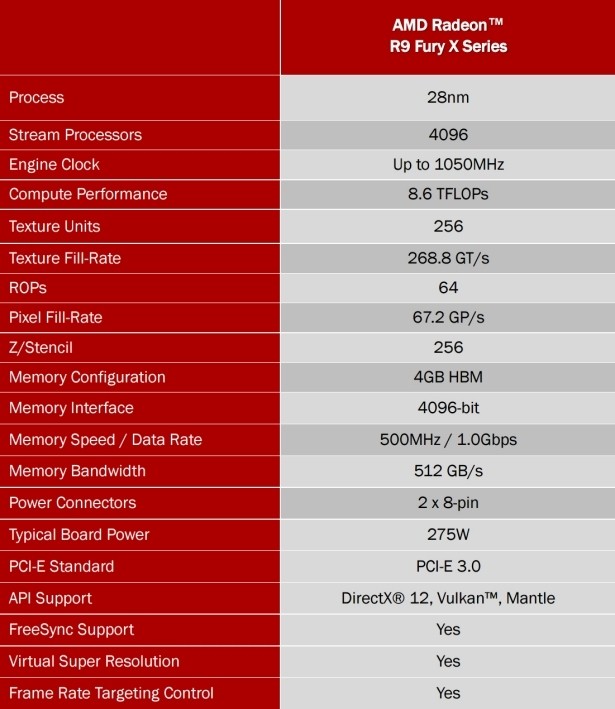
https://www.techspot.com/news/61042-surprise-amd-shares-internal-fury-x-benchmarks-ahead.html